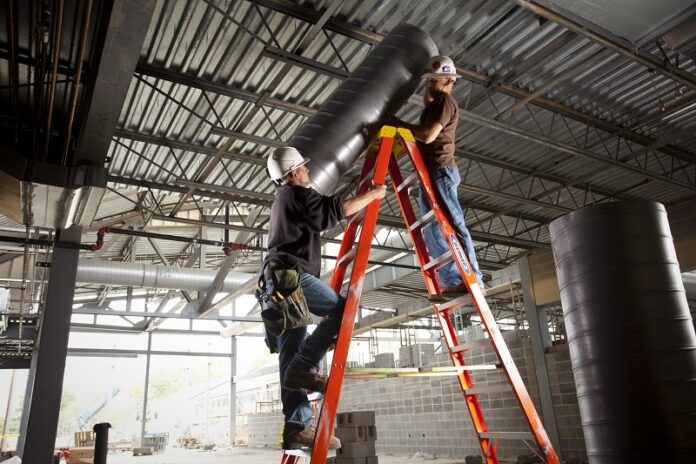Have you ever really thought about how to properly use a safety ladder? Or do you just climb up, praying you won’t fall and ring a chiropractor later? Does the phrase ‘industrial safety ladders instantly conjure up images of precarious balance, vertiginous heights, and intimidating scaffolding? If so, welcome to the club. But fear not! This blog post is dedicated to eliminating those fears and ensuring that you can tackle any ladder-related task with ease, safety and total confidence. Behold, your comprehensive guide to the common mistakes made when using industrial safety ladders, and more importantly, how to avoid these pitfalls.
Capturing both practical advice and remarkable insights, we seek to highlight a somewhat overlooked topic in the realm of home improvement. Industrial safety ladders are not just for industrial usages – they have found their way into homes, DIY projects, small scale renovations and even creative installations. This convergence of industrial tools into residential roles redefines their usage, and more so, demands an understanding of their safe operation.
Whether you’re an ambitious DIYer, a seasoned construction professional or simply someone who likes to touch up the house once in a while, this guide will prove invaluable. We will help you navigate the do’s and don’ts, demystifying the perceived complexity that surrounds the proper use of safety ladders. Let’s climb this ladder knowledge together!
Understanding The Variety of Safety Ladders
Safety ladders are as diverse as they are numerous. From step ladders to straight ladders to articulated ladders, each boasts its unique advantages and limitations. A clear understanding of these variations can significantly reduce the risk of falls, injuries and—most importantly—stresses! Undoubtedly, choosing the right ladder for the job is a critical first step. A high ceiling job doesn’t necessarily imply the need for an extension ladder. Likewise, a short reach doesn’t always mean that a step ladder is ideal. What matters is the conditions of the task, the stability required, the length of usage and more.
Thirdly, appreciating the construct of your safety ladder can neutralize potential danger cues. Familiarize yourself with terms like the rung, the base, locking mechanisms, rails, and so forth. Such knowledge aids in foreseeing any potential hazards and empowers you to control them before they turn troublesome.
Ensuring Adequate Training and Regular Inspections
Did you know that one of the top reasons for ladder accidents is the flawed belief that ladder usage requires no particular skill or understanding? Consequently, ladder safety training gets heavily undermined. Don’t be a statistic – invest time in understanding the proper use, danger cues and emergency responses.
Systematic inspections, too, are not just about ensuring that the ladder is in good shape. It’s about understanding that faulty, damaged, or aged ladders can pose significant risks. Regularly inspect your ladder for hidden damages: look for stress cracks, observe the state of the rungs, note any decay, and always secure loose parts. Essentially, an under-emphasized but safely locked ladder is far safer than a sophisticated but loose one. And no better way to ensure this than attentive inspections!

Becoming Aware of Overloading and Overreaching
Overloading and overreaching, while sounding quite self-explanatory, are surprisingly common mistakes, often leading to catastrophic consequences. With overloading, the issue isn’t just about weight limits; consider the weight distribution and load stability too. Similarly, overreaching can easily result in losing balance and toppling over. Instead of succumbing to the temptation of reaching out too much, climb down and move the ladder closer to the work area. Let’s not stretch safety margins, shall we?
Valuing the Importance of Proper Positioning
Another common error comes with incorrect ladder positioning. Will the ladder slip? Is it resting on an unstable surface or against an unreliable support? Always ensure that the ladder’s feet are on a solid, level surface. If on a soft surface, use a broad and solid material under the legs for support. Also, the industrial safety ladders should lean at the right angle against the support surface – typically, the 1:4 rule applies here. For every four feet of height, the base should be one foot away from the support surface.
Debunking the Myth: Ladder Safety is Unconscious Competence
industrial safety ladders isn’t an art to master—it’s about conscious competence. It’s not just about ‘knowing’, it’s about ‘doing’. Understanding these common mistakes—and actively avoiding them—will substantially mitigate ladder-related misadventures.
Conclusion:
Industrial safety ladders handling isn’t as intimidating as it seems – it’s simply about avoiding common mistakes, being well-prepared, and having a keen sense of awareness. The correct ladder choice, proper positioning, regular inspections, adequate training, and a staunch focus on not overloading or overreaching are the five lynchpins of ensuring safety.
By understanding and respecting your ladder and not pushing it beyond its designated limits, accidents become less likely. It’s crucial to remember that safety isn’t always about the grand measures. It is also about the small, consistent steps that collectively steering us clear from potential disasters. So, shall we ascend the industrial safety ladders together? Surely, the view is terrific from up there!


 Welcome to Infinitive Creative where we share information related to Business, Tech and More. We’re dedicated to providing you the very best information and knowledge of the above mentioned topics.
Welcome to Infinitive Creative where we share information related to Business, Tech and More. We’re dedicated to providing you the very best information and knowledge of the above mentioned topics.